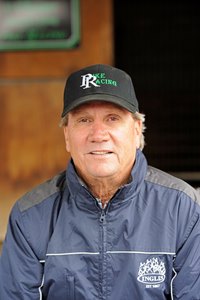Pinhookers Still Major Market Players


After taking some hits in the 2-year-old market, especially in the lower- to mid-price ranges and in the late-season auctions, those who buy horses primarily to be sold later (aka “pinhookers”) said they would be more selective in their purchases this year.
Based on buying patterns at the first three yearling sales this year, it is obvious pinhookers are still a major force within the marketplace. But it remains to be seen how their activity level affects a broader market when the two largest yearling sales take place over the course of the next month.
First up is the Aug. 23-25 Ocala Breeders Sales Co.’s select and open sales, for which more than 1,000 horses are cataloged, to be followed by the marathon Keeneland sale Sept. 12-25 for which 4,479 have been entered. For perspective, it should be noted that not all pinhooker activity is easily identifiable because some purchase in various names such as partnerships and some also buy for end-users or themselves.
Florida-based Randy Hartley and Dean De Renzo have been major players this year, buying five for an average $263,000 at the Fasig-Tipton Saratoga selected sale and three for an average $246,666 at the Fasig-Tipton July sale.
Cary Frommer, a South Carolina-based horsewoman who had two of her pinhooked juveniles sell for $1 million each this year, was busy at all three yearling sales. Frommer, who partners with Barry Berkelhammer on many of her pinhooks, was leading buyer by gross at the Fasig-Tipton Kentucky July sale, buying eight for $750,000, an average price of $93,750.
Frommer also bought four for an average $86,250 out of the F-T New York-bred preferred sale as she modified her program after having difficulty re-selling some of her 2015 New York-bred purchases as 2-year-olds earlier this year.
“I had a little trouble re-selling my New York-breds this year and I think it was more the placement of them than the horses themselves,” she said. “I changed things this year. What I was looking for was a really high-quality horse, as much as my budget can afford, so they are competitive when I sell.”
Louisiana-based pinhooker Al Pike said he is looking especially at yearlings that qualify for certain state-bred incentive programs as a way for his purchases to distinguish themselves when put on the market next year.
“With the purses the way they are, I am always looking for a reason why somebody should come buy my horse—Louisiana-breds, Pennsylvania-breds, and certainly New York-breds—and I’m always trying to find a niche,” said Pike, who also had a seven-figure pinhook score this year. “For example, when I look at two horses and one is a New York-bred and the other is not, I go with the New York-bred. I think it is important.”
Becky Thomas, of Sequel Bloodstock, agreed that having a horse that can distinguish itself from others can make the difference in a fickle market.
“So my game plan for buying is going to be niche markets rather than randomness,” said Thomas, who also sells in the yearling market. “I bought one horse at the Fasig-Tipton July yearling sale that was a California-bred because it is a niche market. I will not be buying as much volume and buying at a higher end.”
